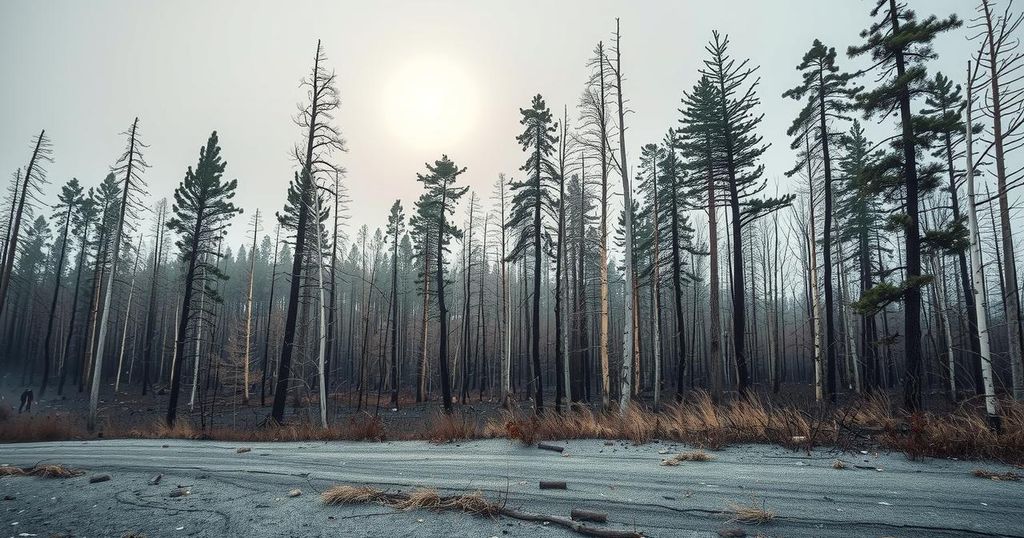Iwate Wildfire Contained: Japan’s Largest in Over 50 Years

The Ofunato wildfire in Iwate Prefecture has been contained after burning 2,900 hectares, surpassing Japan’s previous large fires. Evacuations have been lifted for some residents, but many remain affected. The area’s low rainfall and rising temperatures due to climate change are significant factors in this disaster.
A massive wildfire that started on February 26 in Ofunato, Iwate Prefecture, has been declared contained, according to the city officials. This fire is noted as the largest in Japan in half a century, having scorched approximately 2,900 hectares, which is nearly equivalent to half the area of Manhattan. The devastation surpassed Japan’s previous record, where a 1975 fire in Hokkaido burned 2,700 hectares.
Following the containment, the city lifted the evacuation order for 882 residents from 361 households across four districts. However, evacuation orders remain active for 2,424 individuals from 979 households as the city assesses infrastructure restoration. Further evaluations are expected to determine if additional areas can also lift evacuation measures.
The wildfire’s occurrence followed an exceptionally hot summer last year and very little rainfall in February, with Ofunato receiving only 2.5 millimeters, a historic low compared to the average of 41 mm and the previous record low of 4.4 mm recorded in 1967. The conditions were intensified by the ongoing effects of climate change that has led to increasing temperatures.
Currently, at least 78 buildings have reportedly been damaged due to the fire, although comprehensive assessments of the destruction are still ongoing, as indicated by fire agency officials.
In summary, the recent Ofunato wildfire has been contained, making it Japan’s largest in over 50 years and causing extensive damage. The emergency measures are gradually being lifted, although many remain in effect as infrastructure is restored. Climate change appears to have contributed to the extreme conditions that fueled this fire, highlighting a critical environmental concern.
Original Source: www.japantimes.co.jp







